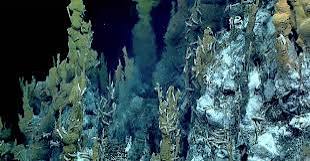
Beneath the vast, uncharted depths of the Atlantic Ocean lies a truly remarkable ecosystem—the Lost City Hydrothermal Field. Discovered in 2000, this alien-like environment is unlike any other known deep-sea habitat. Towering white chimneys, some as tall as a 20-story building, rise from the ocean floor, spewing warm, mineral-rich fluids. This deep-sea wonder is not just a geological marvel—it is a crucial window into Earth’s past and a potential key to discovering extraterrestrial life.
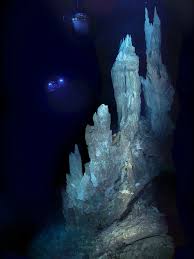
In this article, we’ll explore the fascinating science behind the Lost City, the life it harbors, its implications for the search for life beyond Earth, and the urgent need for its protection.
A Different Kind of Deep-Sea Vent.
Most hydrothermal vent systems on Earth are driven by volcanic activity, where magma beneath the seafloor superheats seawater, creating dramatic black smokers that spew clouds of minerals and support vibrant ecosystems. The Lost City, however, is different—it is not volcanic.Instead, it is powered by a process called serpentinization, in which seawater reacts with the Earth’s mantle rock (primarily olivine) deep below the seafloor. This reaction generates heat and releases hydrogen and methane—gases that provide a crucial energy source for life.
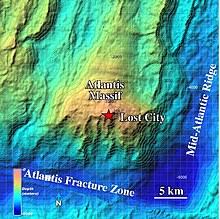
Unlike typical black smokers, the Lost City’s vents are alkaline, with pH levels between 9 and 11, and their fluids are much cooler, ranging from 40 to 90°C (104-194°F). Over thousands of years, this process has formed massive calcium carbonate chimneys that reach heights of 60 meters (200 feet), towering like ghostly underwater cathedrals. Why Is This Important? The Lost City is the only known active vent system of its kind in the world. While black smokers are more common and well-studied, the Lost City represents a unique and potentially ancient form of hydrothermal activity that could have played a role in the origins of life itself.
A Haven for Extreme Life.
Despite the harsh conditions, the Lost City supports a thriving ecosystem. Unlike deep-sea organisms that rely on photosynthesis-based food chains, life here is sustained through chemosynthesis—where microbes convert inorganic molecules like hydrogen and methane into energy. These microbes form the base of the Lost City’s unique food web, supporting a variety of creatures, including : Microbial mats that coat the vents and structures, forming the backbone of this ecosystem. Snails, worms, and small crustaceans that graze on microbial life. Potential unknown species that remain undiscovered due to the extreme inaccessibility of this ecosystem.This self-sustaining microbial life is particularly exciting because it thrives in an environment completely independent of sunlight, using only chemical energy.

What Can It Teach Us About Life’s Origins?
Scientists believe that environments like the Lost City could resemble conditions on early Earth billions of years ago, before life as we know it emerged. The fact that microbes can survive and flourish in such conditions suggests that similar prebiotic chemistry might have led to the first lifeforms on our planet. A Model for Extraterrestrial Life? Maybe.
The Lost City’s ability to sustain life without sunlight makes it a prime analog for alien life in our solar system. Several celestial bodies are believed to have subsurface oceans that interact with rocky cores, creating environments similar to the Lost City. One of the most promising candidates is : Europa (Jupiter’s Moon). Beneath its thick icy shell, Europa is thought to have a vast ocean with hydrothermal activity at the seafloor.
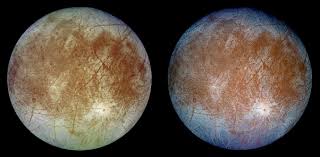
If serpentinization is occurring there, it could create the necessary chemical energy for microbial life. Another one is Enceladus (Saturn’s Moon).
NASA’s Cassini spacecraft discovered plumes of water vapor and organic molecules erupting from Enceladus’s icy surface.These plumes may be linked to hydrothermal vents beneath its subsurface ocean, mirroring the Lost City’s ecosystem. If life exists beyond Earth, it might not be on the surface of a planet, but deep in an alien ocean—thriving in a hidden hydrothermal field, just like the Lost City.
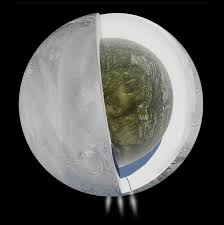
A Fragile and Threatened Wonder.
Despite its scientific importance, the Lost City Hydrothermal Field faces a growing threat—deep-sea mining.Why Is It at Risk? Deep-sea mining companies are looking to exploit mineral-rich hydrothermal vent systems for valuable metals. Although the Lost City itself is not currently being targeted, mining activities near hydrothermal vent fields could disturb delicate ecosystems. Once destroyed, these structures and their ecosystems cannot be replaced—they take thousands of years to form.
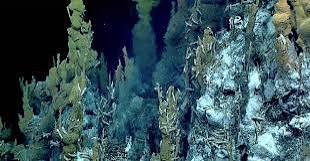
Call for Protection Scientists and conservationists are urging the United Nations and international organizations to designate the Lost City as a Marine Protected Area (MPA). This would prevent mining operations from disturbing this unique ecosystem. Given its importance in understanding Earth’s deep-sea life and its potential connection to extraterrestrial life, preserving the Lost City is crucial.
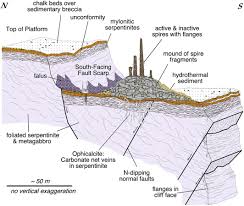
Conclusion: A Natural Wonder Worth Preserving.
The Lost City Hydrothermal Field is not just a stunning geological formation—it is a scientific treasure trove. It offers clues to the origins of life on Earth, serves as a model for potential extraterrestrial habitats, and reminds us that life can persist in the most unexpected places.
As we explore deeper into Earth’s oceans and beyond, we must balance discovery with conservation. The Lost City is a rare and irreplaceable part of our planet’s history, and protecting it should be a priority for future generations.
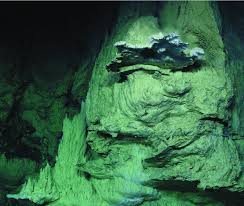
What Do You Think?Could the Lost City hold the key to finding life beyond Earth? Should deep-sea mining be more strictly regulated? Share your thoughts in the comments below!
